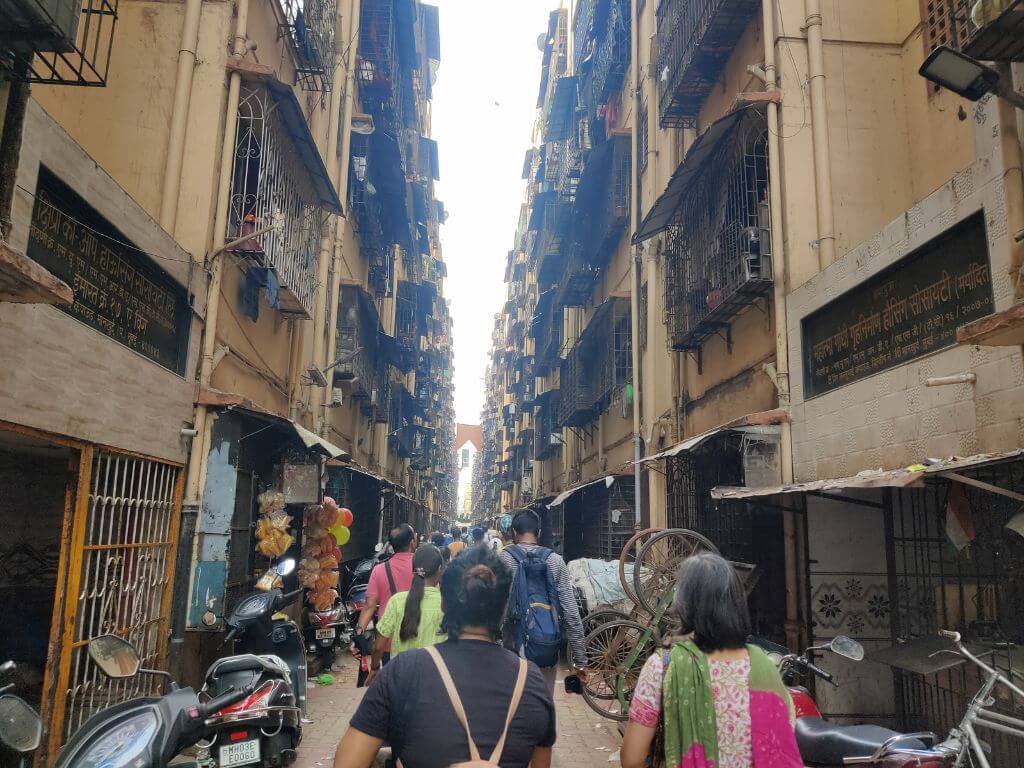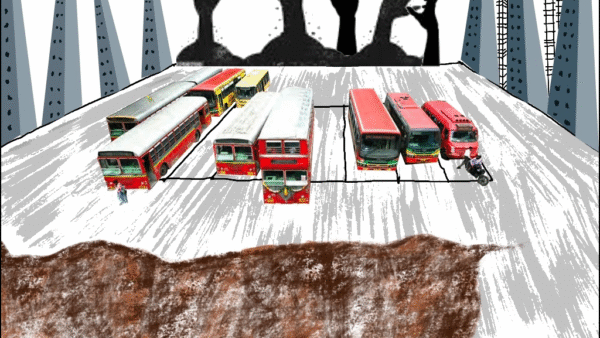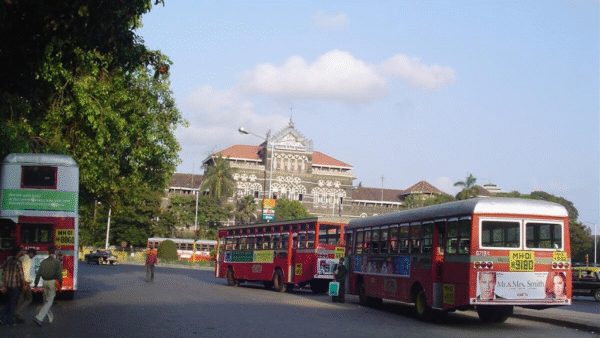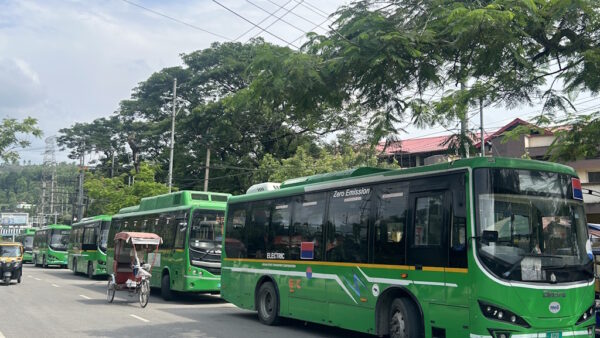Section 1: Ambujwadi
In the northern suburb of Kandivali, Mumbai, there used to be a locality called Babrekar Nagar from where people were resettled in 1998. The New Babrekar Nagar locality became a part of the Ambujwadi slum here. Gradually, people from across the city whose houses were demolished for various projects came to settle down in Ambujwadi. The land here was so uneven that it was said that if you placed a glass on one side of a room, it would slide to the other.
As slums are, this too did not have the basic facilities such as water and sanitation. It was the people who settled here who made Ambujwadi liveable and walkable, it was the people’s struggle with morchas, roundtable conferences and constant communication with the authorities which made Ambujwadi. Yet, demolition squads frequently target Ambujwadi for a variety of reasons, the most recent being the construction of a road through the settlement.
In Ambujwadi, situated on collector-owned land, New Babrekar Nagar and Patra Chawl are the rehabilitation areas, but parts of Ambujwadi have witnessed demolitions including during the heavy rain this July. If land lies vacant, a few people make money selling it; when people construct their little homes, they are demolished.
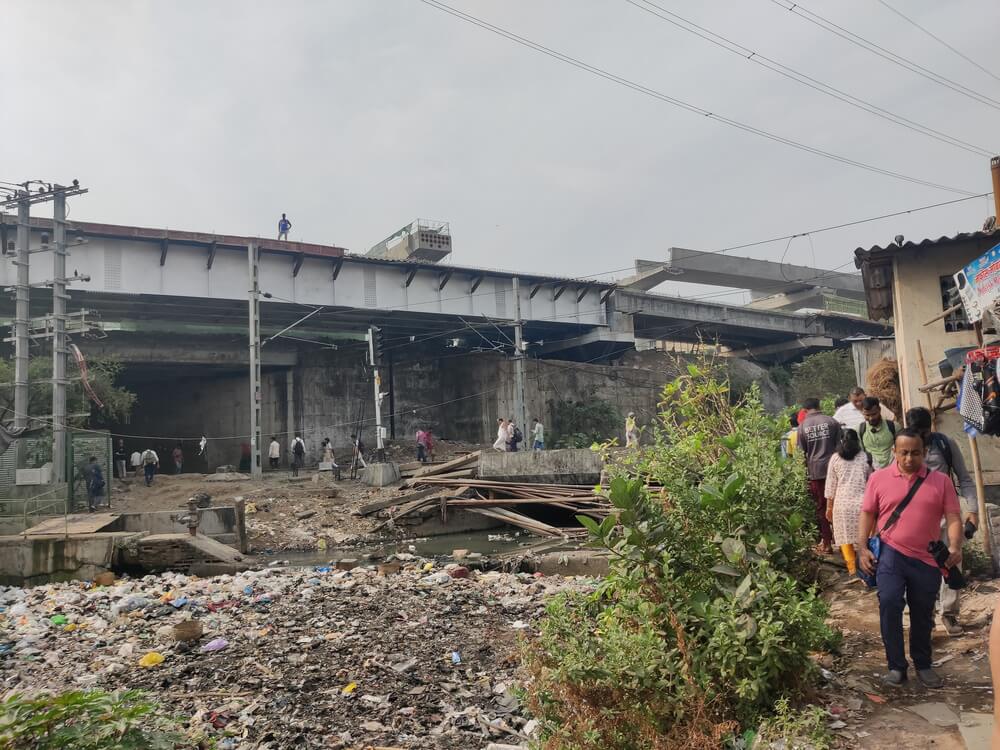
Stigma of Ambujwadi slum
Ambujwadi was developed on a marshy patch. Among those who settled here were denotified tribes like the Pardhis who sell toys, balloons and nimbu-mirchi at traffic signals or work as rag-pickers, make torans and lanterns during Diwali for which they pause their children’s education for at least a month. They were considered a criminal tribe in the British era, a stigma that continues to this day. Whenever there is a robbery in the larger area, Pardhis are picked up and put into the police lock-up.
Besides the Pardhis, alleged criminals who were on the run from the police used to hide here which gave the label of Tadipaar (fugitive) area to Ambujwadi. As more such people came, the identity stuck. Soon, people elsewhere in the city assumed Ambujwadi was not a safe place. Auto rickshaws would not come here, we had to walk for at least 20 minutes from the nearest drop. Children received education but they were rejected at job interviews when their address showed Ambujwadi or Malwani, so they said Malad West instead. But Ambujwadi people are resilient. People built concrete houses in which they set up small factories, beauty parlours, and tailoring businesses; others became auto rickshaw drivers.
Repeated evictions and demolitions
Ambujwadi has never been spared from state action. In the 2005 mass demolitions, Ambujwadi suffered the most when the land was “cleaned up” and barbed wires put up to demarcate it. In 2017, evictions took place in several isolated areas. People who were rehabilitated here by the government had their papers. However, the majority had little to show.
Although the people of Ambujwadi have been advocating for their right to housing through organisations such as YUVA, Ghar Bachao, Ghar Banao Andolan, and New Babrekar Nagar Sangharsh Samiti, demolitions caused them huge losses. It’s a cycle – build homes, watch them get demolished, then rebuild them. The residents of Ambujwadi had Aadhar cards and Voter IDs too, yet are called encroachers. Land related insecurity has been passed on from parents to their children. Ambujwadi and Malwani are among the largest vote banks.
When evictions happen in the monsoon like the one that happened in July, people send their children to the shelters created overnight but they stood over the rubble of their homes because their belongings were still there – in the rain. Notices have to be given before demolition and residents have to be informed in a language they understand. In Ambujwadi, demolition notices are stuck in common areas. Yet, people flock here because Ambujwadi housing is what they can afford. Aksa and Marve beaches are 10 minutes away; the upper-class Evershine Nagar provides employment too. But settlers here did not have an identity beyond their work.
In the Development Plan 1984, Ambujwadi was demarcated as a No Development Zone. During the DP 2034 revision process, the youth here were taught its implications by YUVA; the Malwani Yuva Parishad launched the ‘Haravleli Ambujwadi’ or ‘Lapata Ambujwadi’ campaign to educate others. During the three-month campaign, they conducted meetings, enacted street plays, and organised a postcard protest to the officials. In the revised DP, Ambujwadi has been demarcated as a Special Development Zone allowing housing, amenities and roads. But we do not even need roads that wide, our houses will get demolished to make such roads.
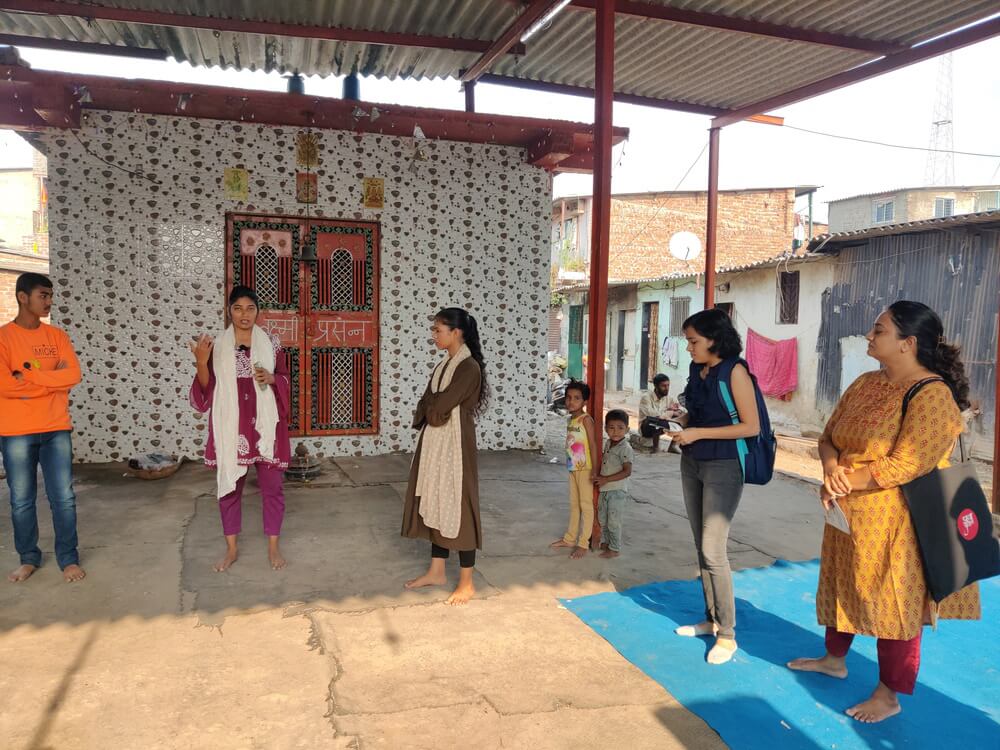
Section 2: Lallubhai Compound
Lallubhai Colony is a group of 70 buildings near Mankhurd that was built in 2004 to rehabilitate slum dwellers. Since then, people have been rehabilitated from different areas across the city – Elphinstone, Bandra, PD’ Mello Road, and so on. They came here to live but ended up far away from their businesses and shops, and had to travel long distances to reach their workplaces.
This rehabilitated place posed many challenges. The basic amenities such as water supply and street lights were missing, the colony was new, people from different locations had been thrown together, there was only one bus – Route 377 – every hour, there were no shared auto rickshaws and many were forced to walk to Mankhurd station. Travelling far for work made it unaffordable for many.
Over the years, people of different castes and religions learned to cohabit. They made their own sources of livelihood – people have opened shops in their houses, the educated ones take tuitions at home, some purchase fish from afar and sell it here, others are vegetable vendors, and still others drive auto rickshaws offering people shared-price autos.
Life in a resettlement building
Even after rehabilitation, life has remained the same as it was in slums for most people. The Lallubhai Compound buildings are closely situated, there is litter between them, garbage dumped carelessly behind the Compound has choked the nullah, many buildings do not have lifts while the ones installed do not work, and there are no street-lights.
It was common to see people here get drunk, hang around, harass girls and young women. There were no policemen on patrol; we had to get back home before dark. Such things reduced a bit after we did mapping, met the authorities who spoke to the police, and patrolling started. Initially, children said they only felt safe at home and school. Little is being done to provide more safe spaces.
Moving from a slum to SRA buildings has meant our houses went from being horizontally laid to vertically stacked one on top of the other, but the facilities did not improve. Nor did our identities change. In slums, there was connection with the community but in the building, no one knows who is living where and doing what. Buildings leave us with no space to get together. So, a huge social transformation gap exists between these two housing models of housing.
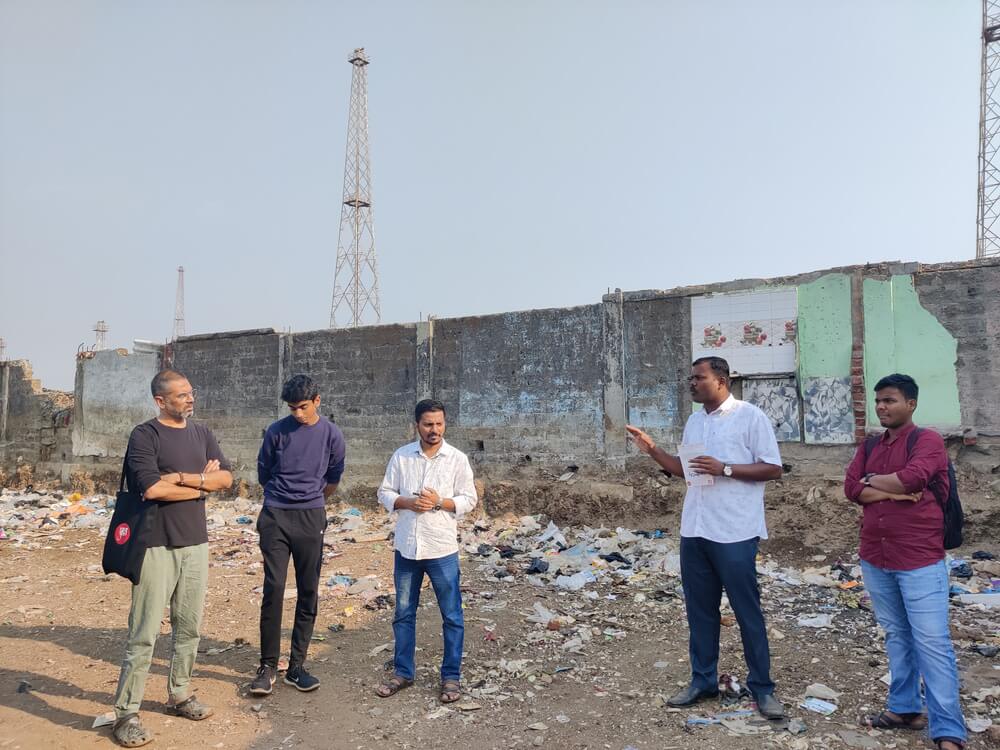
Section 3: The walks
A part of the work done by YUVA was to build a collective among the youth in Ambujwadi and Lallubhai Compound. Some members of these collectives were trained to conduct ComplexCity walks with their participation. The walks have helped us open up about our life stories, not be ashamed of our identities, and talk to the government as well as the people. We talk about housing – TDR and FSI, how builders profit from redevelopment, the politics of redevelopment, and what people lose. We also share about transportation options and how the need for housing impacts people’s connectivity to the rest of the city.
The walks bring all sorts of people and help a bit in dispelling notions such as that of a woman from Mankhurd who used to see Lallubhai Compound while travelling by train and think that it was a settlement of thieves or drunkards. After the walk, her perception changed and she urged others to join the walk and know the real story. But the real change has been for us as walk volunteers; the women and youth who learnt to do these walks at both the locations became more aware of their rights and more vocal about their stories. It is a step towards getting heard by the people in power.
The walks were developed to improve people’s participation in their own neighbourhoods, familiarise residents with how their bastis are made, and what the persistent issues and struggles are despite being in formal housing such as the SRA buildings. To the outsiders, the walks aim to show the struggle of living in informal settlements and the sorry state of affairs in state-sanctioned formal housing. When these stories are shared, they help to empower both the teller and listener.
As walk volunteers, we are proud that after sharing our stories and struggles, we open up to each other; we meet people from different walks of life and are motivated by their ideas and work. Our community sees us as leaders when we talk positively about our bastis and people’s struggle. Participants on these walks are connected with us volunteers who answer specific questions; we see how they are related to larger issues. With the feedback received, we made them more fruitful for residents too who are eager to tell their stories now.
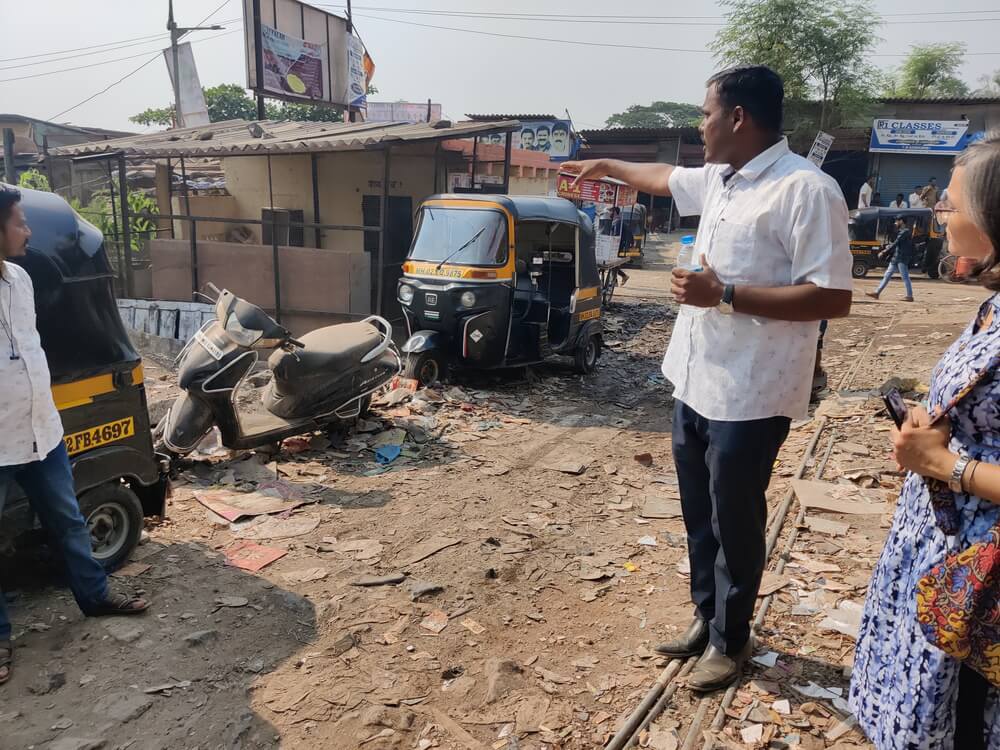
When outsiders walk along and see our houses, they often wonder what kind of places we live in. What is clear is that giving houses in place of houses alone will not solve everything; basic facilities such as school, water, ground, electricity are also equally important. After hearing our stories, visitors should think and discuss that if people are being displaced in the name of development, where people’s participation is..
We hope to build a bridge between our communities and people outside about how we live. Our walk participants range from journalists, urban planners, people working in sectors related to women and child empowerment, and healthcare professionals. A ward officer, whose work concerns the development of six hospitals in Malwani, attended our walk to understand why some people are anaemic, susceptible to typhoid and malaria, and also suffer from skin diseases. This helped the officer make appropriate arrangements for people who will visit these hospitals. People’s perceptions change after the walks.
However, the walks are also about observing ourselves, identifying the struggles we wage for basic amenities, asserting our identities either as slum residents in Ambujwadi, or resettled slum dwellers who find themselves in vertical slums like Lallubhai Compound.
Cover photo: Lallubhai Compound near Mankhurd
Photos: Jashvitha Dhagey

